Having a comprehensive guide to Airstream towing is about syncing the trailer and tow vehicle and having peace of mind. That’s why paying attention to details such as hitch weight, vehicle towing limits, and roadworthy regulations is crucial.
Below are the six common Airstream travel trailers base weights:
| Airstream Model | Average Weight (lbs) |
| Bambi | 3,000 |
| Caravel | 3,500 |
| Flying Cloud | 4,800 |
| International | 5,800 |
| Globetrotter | 6,300 |
| Classic | 8,000 |
Understanding Towing Capacity and Weights
When considering towing an Airstream, I must understand several important terms and ratings to ensure safe and efficient travel.
Deciphering Tow Vehicle Ratings
My tow vehicle must have a towing capacity that exceeds the Gross Vehicle Weight Rating (GVWR) of my Airstream to pull it safely. This capacity is the maximum my vehicle can tow, including the trailer’s Unit Base Weight (the weight of the trailer without cargo or fluids), Tongue Weight (the weight that the fully loaded trailer exerts downward on the hitch of the tow vehicle), and any cargo I intend to carry. It’s critical to review my vehicle’s owner’s manual to determine the Towing Capacity and ensure it’s suitable for the intended load.
Here’s an example table:
| Vehicle Model | Base Curb Weight (lbs) | GVWR (lbs) | Description |
|---|---|---|---|
| Model A | 4,500 | 6,000 | This vehicle can safely carry 1,500 lbs of passengers and cargo combined. |
| Model B | 3,800 | 5,500 | This vehicle can safely carry 1,700 lbs of passengers and cargo combined. |
| Model C | 5,000 | 7,200 | This vehicle can safely carry 2,200 lbs of passengers and cargo combined. |
| Model D | 4,200 | 5,800 | This vehicle can safely carry 1,600 lbs of passengers and cargo combined. |
In each case, the difference between the GVWR and the base curb weight indicates the maximum load of passengers and cargo the vehicle is designed to carry. Overloading a vehicle beyond its GVWR can lead to safety issues and mechanical failures.
Analyzing Airstream Weight Terminology
Understanding Airstream weight terminology is crucial. The GVWR is the absolute maximum weight of the Airstream, including Net Carrying Capacity (the maximum weight of all personal belongings, food, tools, and any installed optional equipment), and the Unit Base Weight. Additionally, I must account for the Tongue Weight, which should be around 10-15% of the Airstream’s loaded weight and critically affects the tow vehicle’s handling. Knowing the Dry Weight – the weight of the Airstream without fuel, freshwater, or gear – helps me gauge how much more cargo I can safely add.
Calculating Total Towing Weight
To calculate the total towing weight, I start with my Airstream’s Dry Weight and add the weight of all cargo, supplies, and optional equipment I plan to bring. The sum must not exceed the GVWR of the Airstream. Additionally, I factor in the Tongue Weight to ensure my tow vehicle can handle the load without compromising stability or safety. If I’m close to the limit, I evaluate if I’m within the Towing Capacity of my tow vehicle, taking into account both the trailer and the weight of passengers and items in my vehicle.
Remember, before embarking on an RV adventure, You should also consider the reliability of the products you use, including the RV warranty that comes with them, as it’s important protection for your investment.
Selecting the Right Airstream Model
When you’re in the market for an Airstream, the model you choose needs to align with your travel needs and towing capacity. Let’s review the options.
Comparing Airstream Models and Sizes
Airstream offers a range of models each with unique features and sizes. Starting with the Basecamp, designed for the adventurous, this model is lightweight and easy to tow, making it ideal for those who prefer a minimalist approach. The Bambi and Caravel elevate the camping experience with additional features and a bit more space, perfect for individuals or small families. For those requiring a touch more luxury and space, the Flying Cloud, Globetrotter, and the spacious Classic offer varying levels of comfort and room, suitable for longer trips or full-time living.
| Airstream Model | Average Base Weight (lbs) | Known For |
|---|---|---|
| Bambi | 3,000 | Compact size, ideal for solo travelers or small families |
| Caravel | 3,500 | Luxury in a small package, modern amenities |
| Flying Cloud | 4,800 | Versatile and family-friendly, multiple floor plans |
| International | 5,800 | Sophisticated design, high-end features |
| Globetrotter | 6,300 | European-inspired design, elegant interiors |
| Classic | 8,000 | Top-of-the-line luxury, spacious and fully equipped |
| Pottery Barn Special Edition | 5,500 | Exclusive design elements, home-like feel |
| Basecamp | 2,650 | Rugged and adventurous, compact and efficient design |
| Tradewind | 4,500 | Classic design, balanced features for long travels |
Reviewing Historical and Current Models
Airstream’s legacy includes many models like the discontinued Nest, a fiberglass travel trailer with a sleek design. While Airstream’s contemporary line up remains predominantly aluminum, understanding the history of the brand’s designs provides insights into their evolution and builds confidence in their quality, especially when comparing them to fiberglass trailers.
Matching Trailers to Tow Vehicles
It’s critical to match your Airstream model to the correct tow vehicle. The vehicle must handle the trailer’s weight in terms of towing capacity and payload. The Airstream travel trailers’ weight varies, with lighter models like the Bambi being towable by mid-size SUVs, and heftier models like the Classic requiring a more robust truck or SUV. Always consult the manufacturer’s towing guide or professional advice to ensure safety and prevent undue stress on your vehicle. To ensure a safe and comfortable driving experience, read more about the right tow vehicle for your Airstream.
Tow Vehicles and Hitch Systems
When towing an Airstream, the tow vehicle and hitch system are essential for safety and performance. It’s important that you match these components properly to ensure a smooth and secure ride.
Choosing the Appropriate Tow Vehicle
I make it a point to match my Airstream’s weight to a tow vehicle with an adequate tow rating. Whether selecting an SUV or truck, the vehicle’s frame, engine, and suspension must be capable of handling the Hitch Weight plus the loaded trailer weight. For example, if I’m driving a Tesla, I’ll confirm if I can add a tow hitch suitable for my Airstream without compromising the vehicle’s integrity.
Understanding and Selecting Hitch Types
The right hitch type can greatly affect towing dynamics. I prefer using a weight distribution hitch to distribute the trailer’s load evenly across my vehicle’s axles. This hitch type helps to maintain stability and can be essential if my trailer has a significant Hitch Weight. It connects to the tow vehicle’s frame and employs spring bars to provide leverage, which minimizes sway and improves control.
Essential Towing Accessories
In my experience, some accessories are necessary for optimal towing. Proper lubrication of the hitch, locking mechanisms, and other moving parts is crucial for maintenance and can be achieved with regular RV lube maintenance. Additionally, my tow package might include other accessories like extended mirrors for better visibility, brake controller systems, and sway control devices to enhance safety during travel.
Airstream Towing Safety and Regulations
Navigating Weight Regulations and Restrictions
When towing an Airstream, it’s crucial to be aware of the Gross Vehicle Weight Rating (GVWR), which indicates the maximum permissible weight for the vehicle, including the weight of the trailer, cargo, fuel, and passengers. Exceeding the GVWR can lead to dangerous levels of inertia, hampering the ability to steer and stop the vehicle effectively. Always confirm that your vehicle’s towing capacity meets or exceeds the Airstream’s GVWR.
Pre-Towing Safety Checklist
Before hitting the road, a systematic safety checklist should be followed:
- Ensure that the hitch weight is properly distributed to avoid an imbalance that could affect steering.
- Check that the brakes on both the tow vehicle and the Airstream are functioning correctly to prevent undue stress during stopping.
- Inspect the tires for signs of wear and verify they are at the correct pressure.
- For additional safety measures, consider improving visibility by tinting your RV windows, which can also protect your Airstream’s interior.
Handling and Maneuvering Tips
Familiarize yourself with handling tips to maintain control of the Airstream during travel. Practice maneuvers in a safe environment before embarking on a trip. When towing, make wider turns to accommodate the Airstream’s length, and allow for increased distance to stop safely. Understanding how your Airstream reacts in various scenarios is critical; this knowledge ensures not only safety but a more enjoyable towing experience. Always be safe and remain acutely aware of your surroundings to anticipate and react to changes on the road.
Maximizing Comfort and Storage on Your Journey
When embarking on an adventure with your Airstream, efficient use of space and comfort are paramount. Ensuring everything fits and is readily accessible can make your journey more enjoyable.
Efficient Packing and Weight Distribution
I always start by considering the weight of my batteries and LP tanks. These heavier items must be positioned to maintain a balanced load, which stabilizes the trailer and prevents excess strain on the towing vehicle. For example, placing heavier items over the axle ensures that tongue weight is within the recommended 10-15% of the trailer’s gross weight. This attention to weight distribution is crucial in avoiding unnecessary wear on your vehicle and improving fuel efficiency.
- Proper placement of batteries: near the axle to balance weight
- LP tanks: secure them close to the trailer’s front, mindful of their weight
- Food and personal belongings: distribute evenly throughout the trailer’s storage compartments
- Full water tank: impacts weight significantly, fill up near your destination if possible
- Thanks to tips on how to conserve water while boondocking, I can reduce the water I carry, impacting the trailer’s total weight.
Integration of Amenities for Optimal Comfort
Comfort in an Airstream is about efficiently utilizing what you have. I ensure my storage space is optimized without overloading. I use compression bags for clothes and multi-functional furniture with built-in storage for my personal belongings to keep my living space tidy and open.
- Batteries and propane tank weight: factor into how much you can bring without risking overloading
- Full water tanks: I only keep as much as needed when on the move to reduce weight
- Personal belongings: keep only the essentials to avoid clutter and weight issues
- Effective management of food storage: means having what you need without waste
- If my journey involves temperature extremes, I manage my water system accordingly by understanding potential causes & solutions for when my RV water is too hot or looking at fixes when RV water is yellow.
By carefully planning the layout and taking steps to ensure the proper weight distribution and amenity integration, my Airstream is not only a mode of transport but a cozy, functional home on wheels.


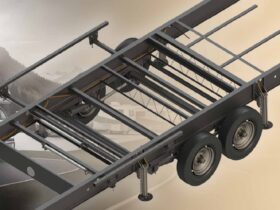

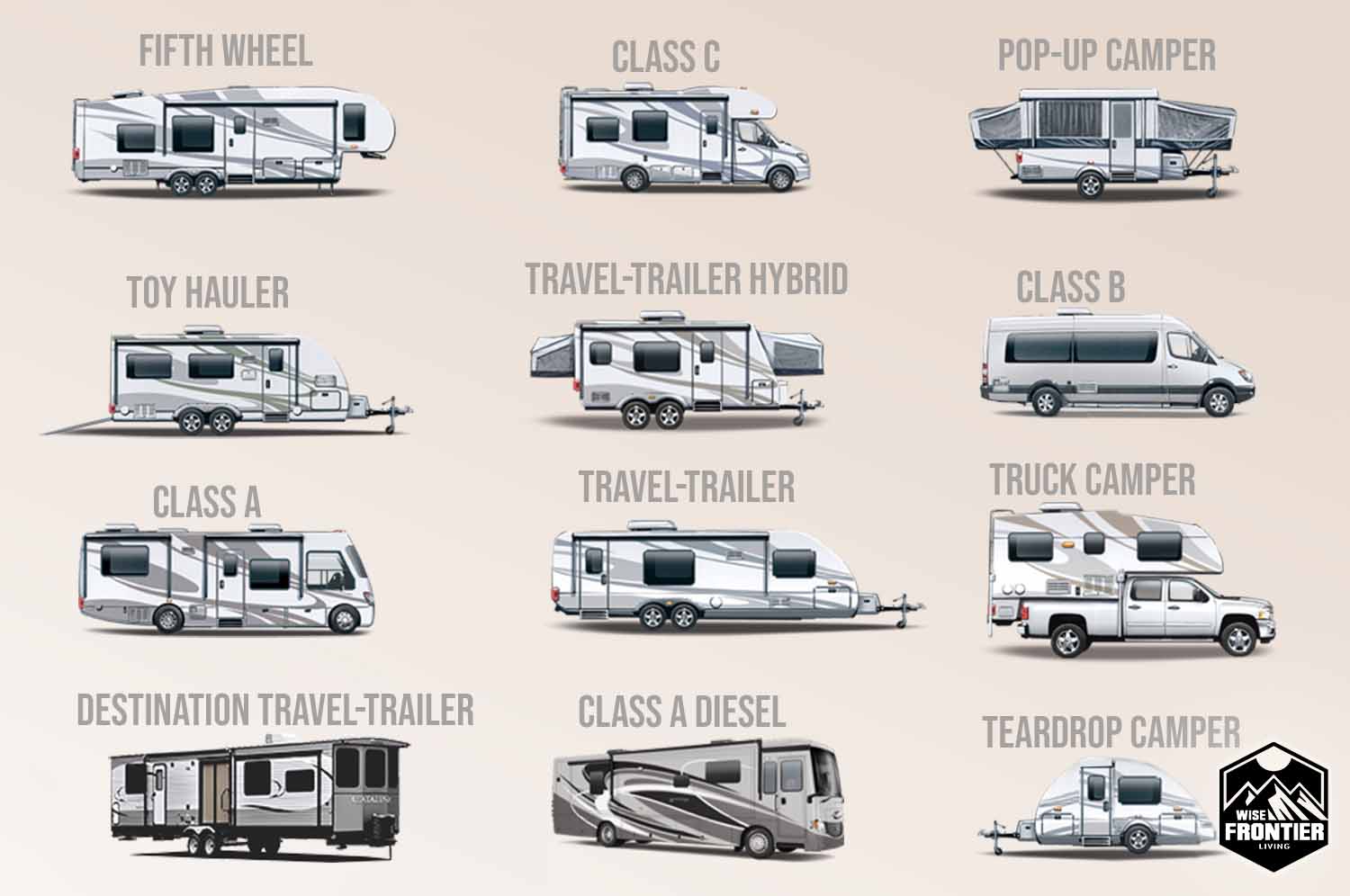
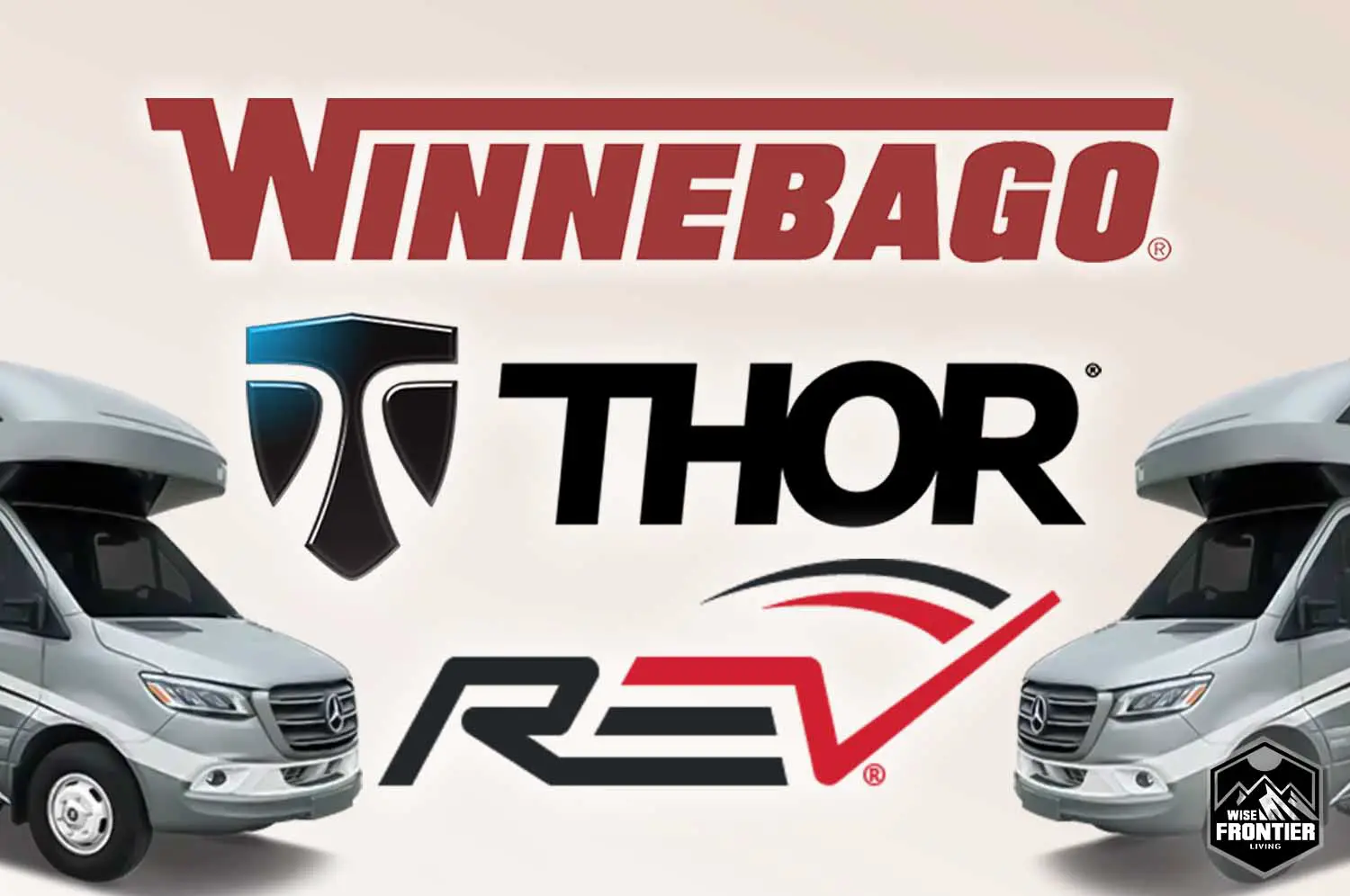

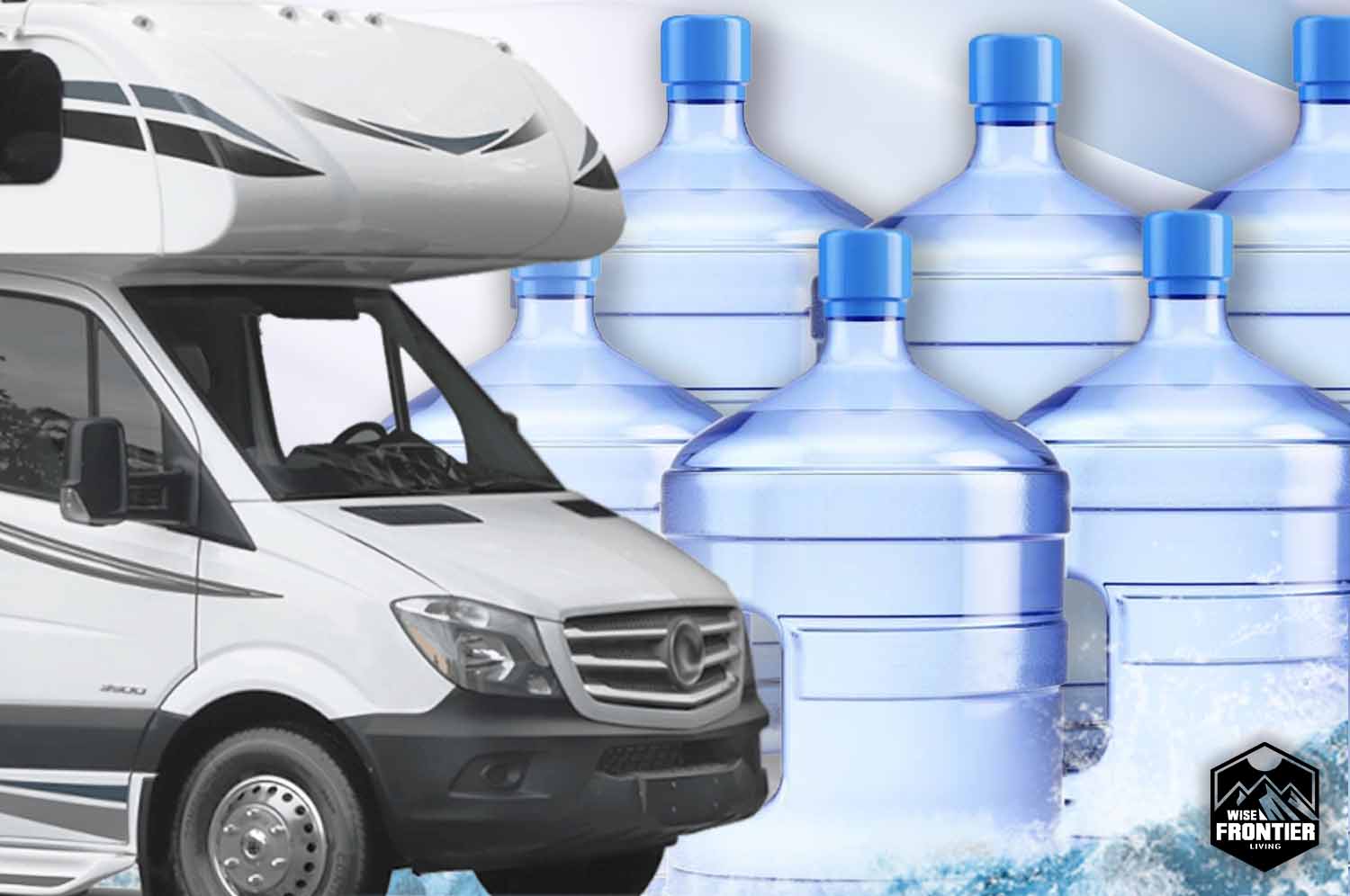

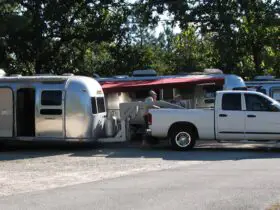
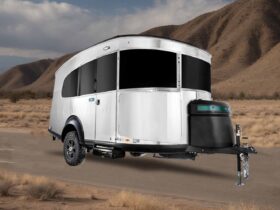

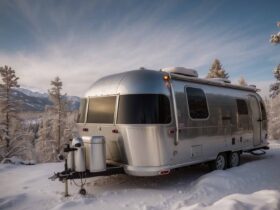
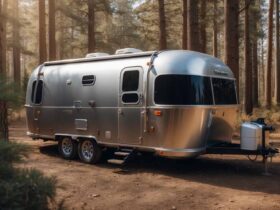
Leave a Reply